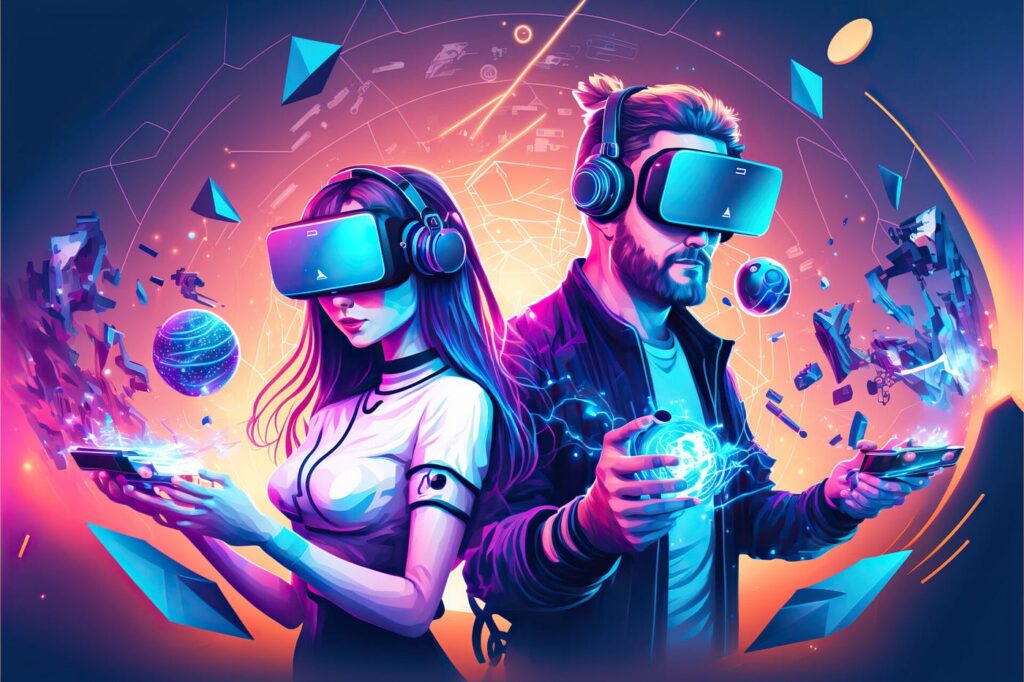
Absolutely! Here’s a full article-style write-up for:
🥽 The Future of Virtual Reality in Game World Exploration
Virtual Reality (VR) is no longer a novelty—it’s a paradigm shift. As the technology matures, VR is unlocking new dimensions of immersion and interactivity in gaming. No longer confined to screens or controllers, players can now step inside game worlds, feel their scale, touch their spaces, and explore them with a sense of physical presence that was once science fiction.
But where does VR go from here? And what does the future hold for how we explore virtual game worlds?
Let’s dive into the exciting possibilities—and challenges—shaping the next era of VR world design.
🚀 Why VR Game Worlds Feel So Different
In traditional games, exploration is abstract. In VR, it’s embodied. That changes everything.
VR brings:
- 1:1 physical movement → You move, the world responds
- Spatial audio → Directional sound deepens immersion
- Natural interactions → Grabbing, pointing, leaning feel intuitive
- Presence → You’re there, not just watching a character who is
This sense of presence reshapes how designers think about scale, pacing, navigation, and even emotional storytelling.
🎮 Example: In Half-Life: Alyx, opening a drawer or ducking behind cover feels real—because you’re doing it, not pressing a button to simulate it.
🔮 Emerging Trends in VR World Exploration
🌍 1. Hyper-Immersive Environments
Worlds in VR aren’t just pretty—they’re interactive sandboxes. Players expect tactile feedback, reactive AI, and rich physicality.
- Pick up, inspect, and toss any object
- Use real gestures to cast spells, reload, or open doors
- Hear echoes in cavernous spaces or feel claustrophobia in tight corridors
🧠 Design Insight: Environmental design must consider player movement, not just visual flow. Will the player bend, crouch, or turn 180°?
🧭 2. Natural Movement & Navigation Systems
Teleportation is common—but the future is in hybrid movement systems that reduce motion sickness and increase realism.
Examples include:
- Hand-over-hand climbing (The Climb)
- Arm-swing locomotion for walking (Gorilla Tag)
- Smooth artificial locomotion with comfort settings
- Room-scale exploration and passthrough blending with real-world spaces
🎯 Goal: Make movement intuitive without overwhelming or disorienting players.
🧱 3. Modular & Expanding Worlds
VR worlds are becoming larger, persistent, and modular—like living spaces you return to rather than linear levels you complete.
- VRMMOs and shared social hubs (Zenith, VRChat)
- User-created expansions and community world-building
- AI-generated or procedural VR environments
- Seamless transitions between indoor/outdoor or dream/real states
🧪 Next Frontier: Persistent VR universes where your actions have lasting impact on shared worlds.
🧠 4. Cognitive & Emotional Layering
VR triggers powerful emotional responses because of its immediacy.
- Horror feels intimate in VR (you don’t just see the monster—you hear its breath behind you)
- Joyful exploration feels magical when you’re floating, gliding, or flying
- Narrative beats hit harder when characters look you in the eye or whisper directly into your ear
💡 Design Tip: Use proximity, body language, and pacing to make emotional storytelling in VR hit deeper than ever.
🧰 5. Tools for Player Creativity
Worlds are becoming playgrounds and toolkits, not just environments.
- VR world editors like Horizon Worlds, Rec Room Maker Pen, and Neos VR
- Physics-based sandbox exploration (Boneworks, Townsmen VR)
- AI-assisted building and real-time world manipulation
Players will increasingly co-create the spaces they explore, reshaping worlds into personal experiences.
🌐 Where the Future is Headed (2025–2030)
| Trend | Description |
|---|---|
| Mixed Reality Integration | Blend of real-world and digital objects—e.g., place a fantasy door in your kitchen |
| AI-Generated Environments | On-the-fly generation of landscapes, interiors, NPC dialogue |
| Haptics & Full-Body Feedback | Gloves, vests, and treadmills that simulate texture, pressure, or motion |
| Eye Tracking & Emotion Detection | NPCs react to your gaze or facial expression for deeper immersion |
| Neural Interfaces | Experimental brain-computer interfaces could allow mental input for movement or interaction |
| Personalized Narrative Worlds | Games that adapt their environments to match your personality, preferences, or mood |
🎮 Examples of Games Leading the VR World Exploration Charge
| Game | What It Does Right |
|---|---|
| Half-Life: Alyx | Dense world design, physical interaction, environmental storytelling |
| Boneworks | Physics-based movement and combat systems |
| The Walking Dead: Saints & Sinners | Exploration-focused survival with tactile inventory systems |
| Star Wars: Tales from the Galaxy’s Edge | Immersive narrative and iconic location design |
| VRChat / Rec Room | Social exploration and user-generated worlds |
| The Climb 2 | Vertical traversal, scale, and scenic exploration |
🧭 Design Considerations for the Future
✅ Make environments “feelable” – Design with sound, touch, and motion in mind
✅ Reduce friction – Simplify controls, avoid overcomplicated menus
✅ Support all bodies – Include seated, standing, one-handed, and comfort-first modes
✅ Think modular – Build worlds that evolve, expand, and persist
✅ Focus on presence – The more there a player feels, the more memorable the world becomes
✨ The holy grail? A VR world that feels so real and responsive that players forget where they end and the world begins.
📌 Final Thought
The future of virtual reality in game world exploration isn’t about higher resolutions or fancier headsets—it’s about feeling like you belong in a world that responds to you.
As technology improves and creativity soars, VR will redefine exploration. We won’t just “go to” new places. We’ll live in them, shape them, and remember them as real.
Want help designing your own immersive VR world, balancing movement systems, or crafting presence-driven environments? Let’s build the future of exploration—one step (or teleport) at a time. 🌍🕶️✨